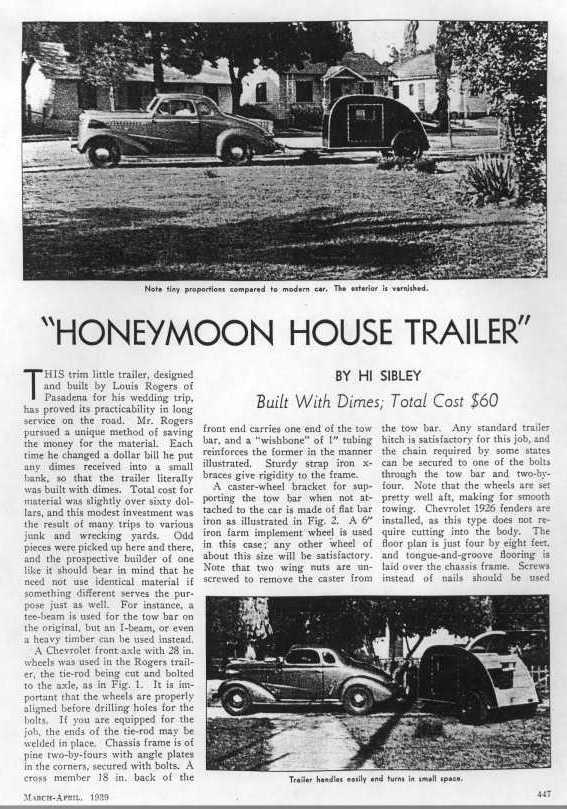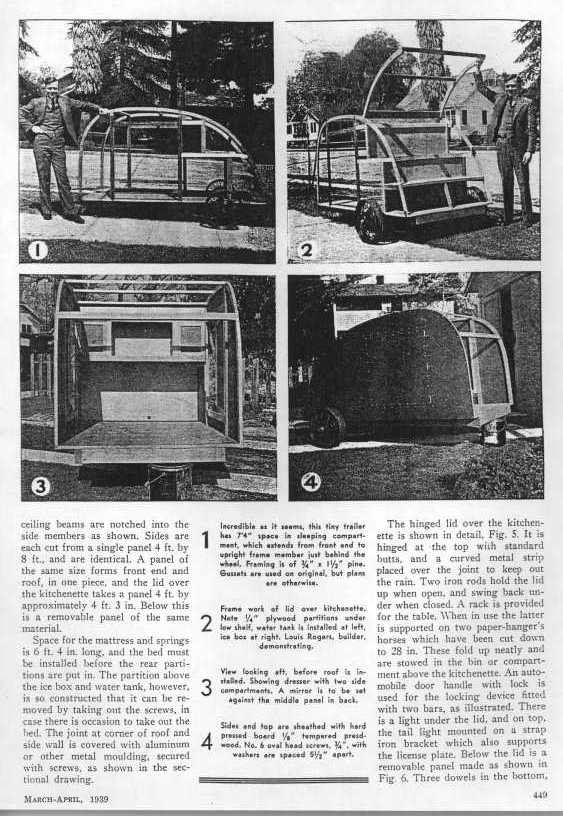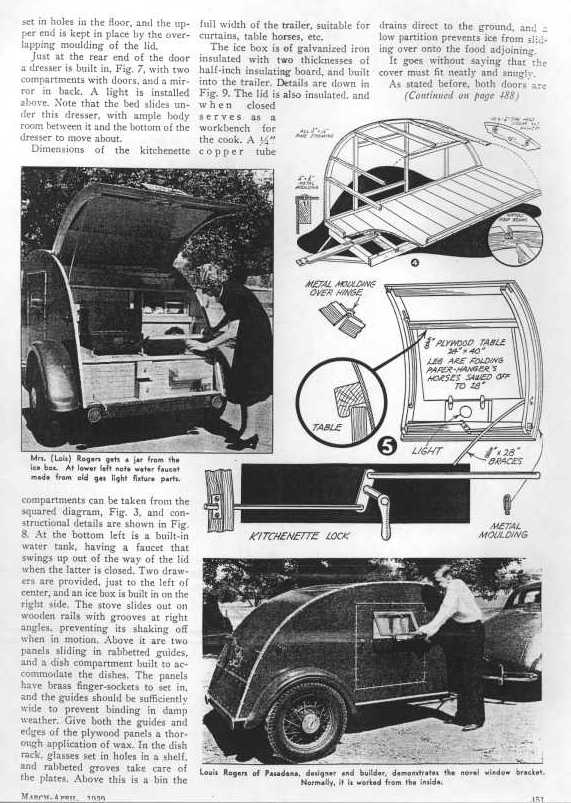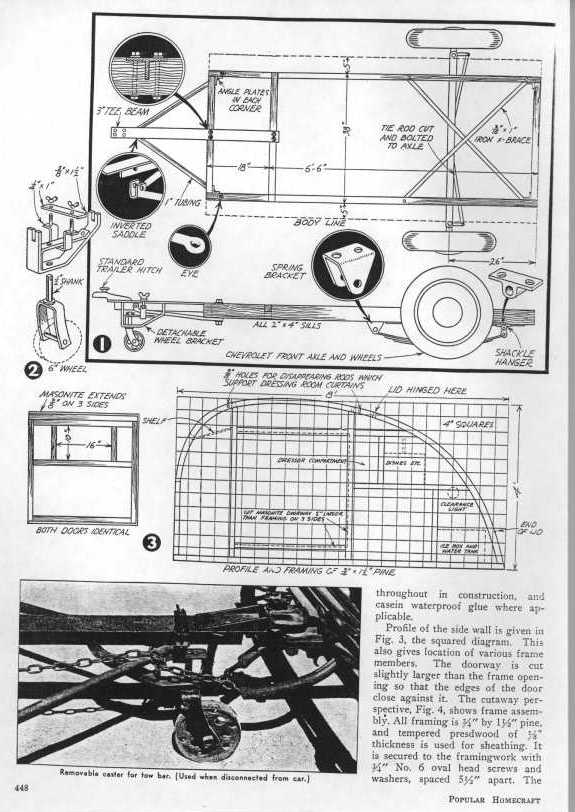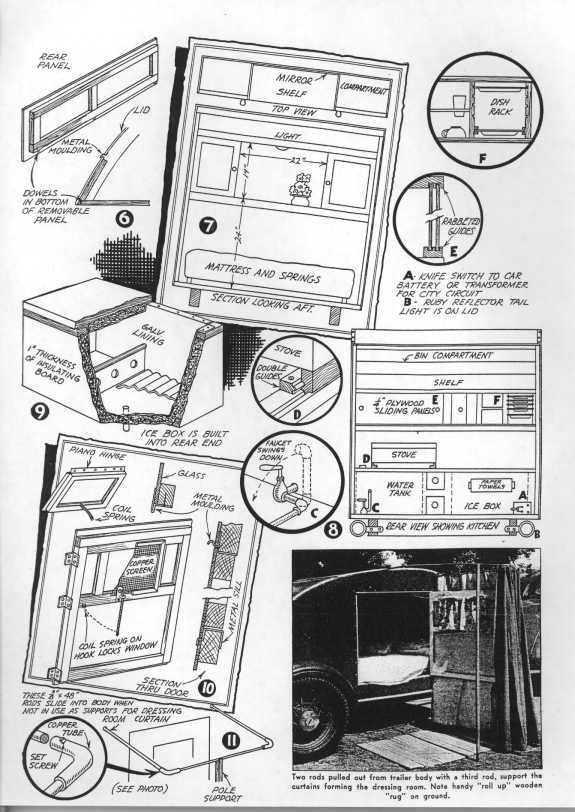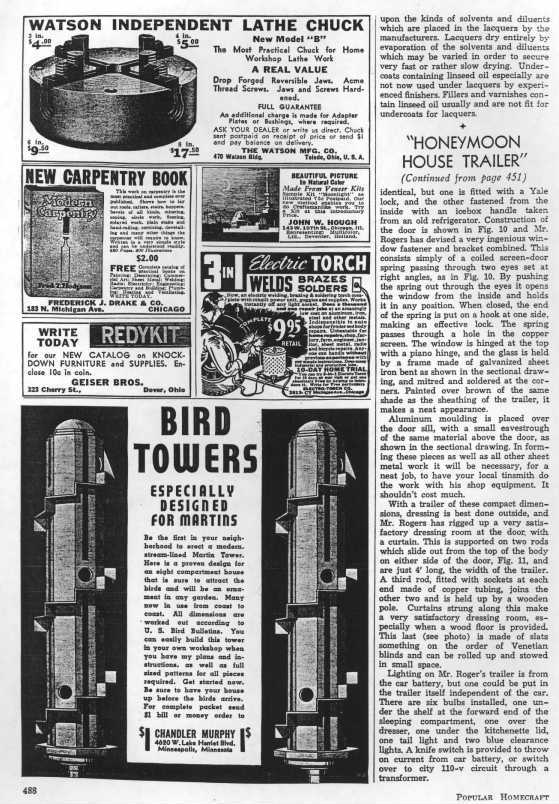COVER STORY: The History of Teardrops
- Sarah Tucker
- Jan 1, 2019
- 4 min read
by: Sarah Tucker

Teardrop trailers first became popular in the 1930s, when magazines such as Mechanix Illustrated published plans. The first teardrop designs incorporated standard 4 by 8-foot sheets of plywood with hardwood spars. Teardrop trailers remained popular until the mid-1960s, after which they disappeared from mainstream camping. However, in the late 1990s, plans became available on the Internet and in recent years teardrop trailers have made a resurgence and are again growing in popularity. While not all-encompassing, this is just a small part of the history that was the beginning of teardrop trailer.

In the December 1936 issue of Mechanics and Handicrafts, this article ran and seems to be the oldest known written artifact about teardrop trailers. It includes very little on the background of the units but does have step by step instructions for building one. I personally loved the first photo of the movie star entering her trailer. The author posted a material list and cost analysis at the end of the article that will make anyone building in today's society smile...or maybe grimace. And thus...the birth of the DIY teardrop trailer plans.

BILL WORMAN
Founder of Kit Teardrop Trailers
Editors Note: Marty Boehme has been generous in offering some of his knowledge on the background of teardrops and the men who have built this wonderful pastime of tiny camping.
Bill's high school yearbook says he was the most "studious boy". After graduation, he wanted to get out of Spokane, since there were no opportunities there during the depression years. His dad dropped him off on a hill, where he would most likely be picked up by a slow moving truck driver on the steep upgrade. He ended up in Southern California.

After this experience I felt a debt to all those who reached out to me and from this I drew my mission statement: ‘Show people things they wouldn’t normally see, to inspire them to do things they wouldn’t normally do.’ Dedicating myself to this was the best way I could think to repay them. I left my old life with a renewed passion I would not have had without that event.”
He was a self-learned man, putting together a ham radio as a teen. At the age of 19, he was given an electrician journeyman’s book and passed the tests to be a radio technician. He used this talent to work in the movie industry shortly before the beginning of WWII. Always being fascinated with airplanes, he quickly moved to management where he oversaw the building of a basic trainer aircraft for the WWII war effort.
Just after the end of the war, Bill developed the most enduring of all teardrop brands, the KIT Kamper. The company name was KIT Manufacturing Company and was headquartered in the shell of an abandoned fruit stand in Norwalk, California. Bill planned to offer the trailer as a kit (hence that name) but received very few orders in the beginning.
And so with partner, Dan Pocapolia, they began to offer 4 x 8 foot trailers fully assembled at dealer trade shows in February of 1946 for $500. They booked 500 dealer orders and were in business! Over the next year, the men took their initial model and made several revisions both to allow for quicker production and to be able to offer options. By mid-year they had orders for over 1,000 units and were operating two shifts that were producing 40 teardrops a day. By January of 1948, they had designed a larger trailer and the Kit Kamper line was shut down.

Eventually, the company became one of the biggest names in high-end RV manufacturing. Today the Kit teardrop is honored in the RV Hall of Fame museum as one of the founding manufactures of this industry.
After living in the San Francisco Bay Area for a number of years, Bill permanently retired on Orcas Island, Washington and lived there for 40 years. Bill Worman, the founder of KIT Teardrop Trailers, died July 15th of natural causes. Staying at the home of his son, Jack, in Sequim, Washington Bill’s health rapidly declined the last few months of his life. Bill was 93. Bill lost his wonderful wife, Ione about 18 years ago and is survived by three daughters, two sons and numerous grandchildren and great-grandchildren.
IN THE MAGAZINES
In the March/April 1939 issue of Popular HomeCraft magazine, a story by Hi Sibley ran entitled"Honeymoon House Trailer."
This article features a teardrop designed and built by Louis Rogers of Pasadena, CA for his wedding trip. The article's subhead "Built with Dimes, Total Cost $60" was no play-on words. Rogers literally saved every dime he received when purchasing something and eventually used those dimes to build his unit. The story also ran with detailed sketches and instructions on how to create a teardrop just like Rogers'.
TRAILER FOR TWO

In 1947, Hi Sibley was at it again with what has become the single most popular vintage story on teardrop trailers in Mechanix Illustrated.
This article features a teardrop designed and built by Louis Rogers of Pasadena, CA for his wedding trip. The article's subhead "Built with Dimes, Total Cost $60" was no play-on words. Rogers literally saved every dime he received when purchasing something and eventually used those dimes to build his unit.
The story also ran with detailed sketches and instructions on how to create a teardrop just like Rogers'.

